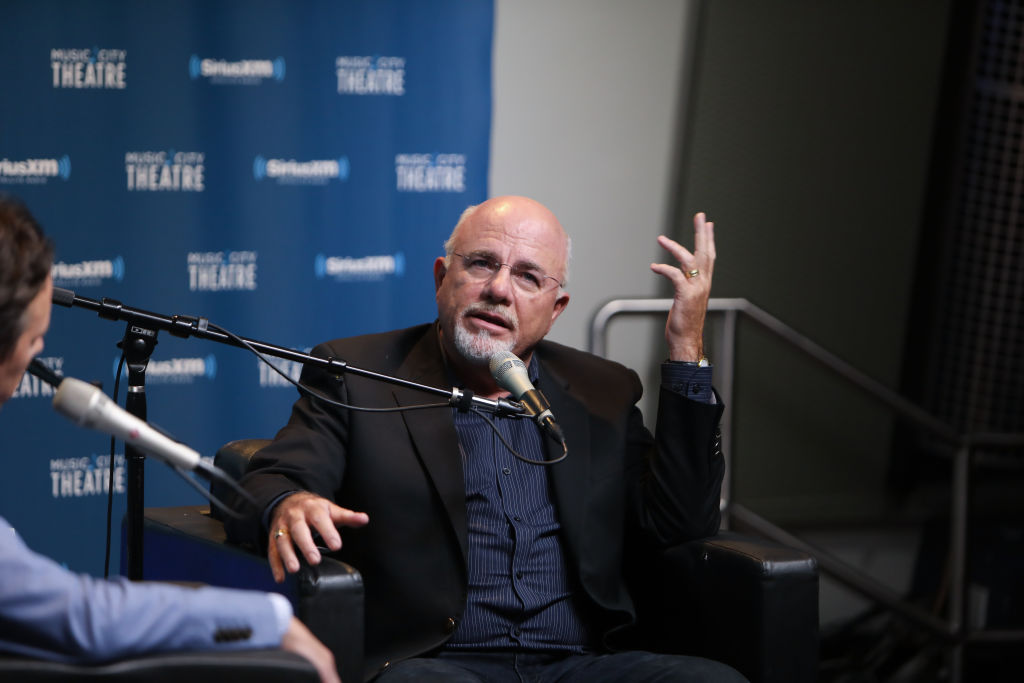A Financial Checklist for Your College-Bound Kids
Is your child heading off to college this fall? If so, make sure they're prepared and protected in these four key areas.


If you have a child who will attend college this fall, their education will go beyond what they learn in class. Chances are, they’ll also get a crash course in how to handle money. Your student may, for example, open a bank account or credit card for the first time. Your child will also need to have health insurance coverage and, if they drive a car, auto insurance. As your student prepares to head for campus, consider how you may manage these areas together.
Banking essentials
If your child doesn’t yet have a checking account, they may want to open one for receiving financial aid money, income from a part-time job, or other funds. Matt Schulz, chief credit analyst at LendingTree, recommends having your child establish an account at your bank so you can quickly and easily transfer funds to their account.
If they opt to open an account at a different institution, however, you can still send money to them. Many banks allow you to make fee-free transfers to checking accounts at other institutions, although the transfer may take a few days to process.

Sign up for Kiplinger’s Free E-Newsletters
Profit and prosper with the best of expert advice on investing, taxes, retirement, personal finance and more - straight to your e-mail.
Profit and prosper with the best of expert advice - straight to your e-mail.
Alternatively, you could use a peer-to-peer transfer service. With Zelle, for example, you can instantly transfer funds directly between your checking accounts as long as at least one of your banks participates in the Zelle network, and transfers are typically fee-free. Other P2P services include Apple Cash, PayPal and Venmo. You can transfer money for free with these services, too. But the funds you send don’t go directly to the recipient’s bank account. Instead, they’re stored as a balance with the service. Moving money instantly from that balance to a bank account usually entails a fee; free transfers typically take up to three business days.
Wherever your child chooses to bank, he or she should look for an account that has no monthly fee and provides fee-free access to ATMs close to their campus. Some banks offer accounts with fee breaks for college students. Chase College Checking, for example, is for students ages 17 to 24 and charges no monthly fee. Chase has more than 15,000 ATMs and more than 4,700 branches across the U.S. Another good option is the Capital One 360 Checking account, which has no monthly fee or minimum-balance requirement and provides access to 70,000 ATMs fee-free.
Compare some of today's top savings rates and other banking products using the tool below, powered by Bankrate.
Building credit
If your child is ready to manage a credit card responsibly, using one in college can give them a head start on developing a positive credit history. Later on, a solid credit profile may help them successfully qualify to rent an apartment, for example, or take out a car loan or mortgage.
One option is to add your child as an authorized user on your credit card, which can help them build credit. As an authorized user, your child can make purchases and, depending on the card, they may gain access to your card’s perks, such as rental car insurance. If you take this route, keep in mind that you’re ultimately responsible for the card and that any missteps from the authorized user — say, racking up a big balance that’s close to your card’s limit — could hurt your credit score, too.
Alternatively, your child could apply for a student credit card with a low limit, which can prevent them from overspending, says Hillary Seiler, a senior certified credit counselor and CEO of the financial education program Financial Footwork. Capital One Savor Rewards for Students, for example, has no annual fee and offers 3% cash back on streaming-service subscriptions and at grocery stores and restaurants. However, interest rates on these cards can be high; the Capital One card, for example, recently charged as much as 29.24%. Your student may quickly face ballooning debt if they fail to pay off the balance every month.
Another possibility is a secured credit card, such as the Discover It Secured Card. With a secured card, you put down a deposit that is equal to the card’s credit line. For example, with a $300 deposit, spending is limited to $300.
Have a student fueling up for finals? With grocery prices on the rise, a credit card that offers cash back on groceries and dining can help stretch their food budget. Explore Kiplinger's top credit card picks for food purchases, powered by Bankrate. Advertising disclosure.
Health insurance
By law, your child can remain on your employer or marketplace health insurance plan until they turn 26. For most families, this is the most affordable option.
Even if your child is covered by your policy, their college may automatically enroll them in its health insurance plan to ensure that they’re protected. But these plans can be expensive, averaging $3,000 to $5,000 a year, according to HealthInsurance.org. Make sure to waive that coverage if your child is enrolled in your plan or in another option that better suits their needs.
If your child can’t enroll in your plan, an alternative is insurance through the government’s health care marketplace, at HealthCare.gov. If the child is a dependent on your tax return, your income will determine whether they qualify for a premium tax credit and, if they are eligible, the size of the credit, which lowers the premium. If you don’t claim your child as a dependent, they may be able to get a larger subsidy based on their income, if it’s lower than yours, says Divya Sangameshwar, insurance expert at consumer website ValuePenguin.
At www.kff.org/interactive/subsidy-calculator, you can use the tool from the health policy research organization KFF to estimate premiums and subsidies.
Policies are divided into four categories — bronze, silver, gold and platinum — based on the amount of the premium, out-of-pocket costs and deductible. Generally, bronze plans have the lowest premiums and highest deductibles, platinum plans have the highest premiums and lowest deductibles, and silver or gold plans fall somewhere in between.
Your child can apply for coverage during annual open enrollment, which runs from November 1 to January 15. Or, if your student has a qualifying life event, such as moving to a new area to attend school, they can apply outside of open enrollment.
Car insurance
Because young drivers are more likely than older drivers to be involved in car accidents, their annual auto insurance costs can be considerably higher. According to Bankrate, yearly costs average $5,158 for an 18-year-old male driver and $4,778 for a female driver of the same age. By comparison, the average annual cost of car insurance for a 50-year-old is $2,514.
Greg Martin, president of Think Safe Insurance in Brandon, Fla., recommends that you keep your child on your auto policy, which may allow you to maintain a multi-car discount and lower your child’s costs.
Insurance companies commonly provide student discounts. Progressive Insurance, for instance, offers a discount if your child attends college full-time at least 100 miles from home, is younger than 22 and drives the car only when they’re home during school breaks. State Farm has a Steer Clear discount for those who are younger than 25, haven’t caused any accidents in three years and complete a driver training program.
Explore some of today's best car insurance offers with the tool below, powered by Bankrate.
Note: This item first appeared in Kiplinger Personal Finance Magazine, a monthly, trustworthy source of advice and guidance. Subscribe to help you make more money and keep more of the money you make here.
Related content
Profit and prosper with the best of Kiplinger's advice on investing, taxes, retirement, personal finance and much more. Delivered daily. Enter your email in the box and click Sign Me Up.

Ella Vincent is a personal finance writer who has written about credit, retirement, and employment issues. She has previously written for Motley Fool and Yahoo Finance. She enjoys going to concerts in her native Chicago and watching basketball.
-
 If You'd Put $1,000 Into Berkshire Hathaway Stock 20 Years Ago, Here's What You'd Have Today
If You'd Put $1,000 Into Berkshire Hathaway Stock 20 Years Ago, Here's What You'd Have TodayBerkshire Hathaway is a long-time market beater, but the easy money in BRK.B has already been made.
-
 New SALT Cap Deduction: Unlock Massive Tax Savings with Non-Grantor Trusts
New SALT Cap Deduction: Unlock Massive Tax Savings with Non-Grantor TrustsThe One Big Beautiful Bill Act's increase of the state and local tax (SALT) deduction cap creates an opportunity to use multiple non-grantor trusts to maximize deductions and enhance estate planning.
-
 3 Things Dave Ramsey Says to Stop Buying — and 2 That Are Worth It
3 Things Dave Ramsey Says to Stop Buying — and 2 That Are Worth ItDebt-free living starts with smart choices. Here's what Ramsey says to avoid and where your money is well spent.
-
 Five Big Beautiful Bill Changes and How Wealthy Retirees Can Benefit
Five Big Beautiful Bill Changes and How Wealthy Retirees Can BenefitHere's how wealthy retirees can plan for the changes in the new tax legislation, including what it means for tax rates, the SALT cap, charitable giving, estate taxes and other deductions and credits.
-
 This is the Best CD to Get Amid Rate Uncertainty
This is the Best CD to Get Amid Rate UncertaintyThis CD helps you earn more than 4%, with quick access to your cash if you need it.
-
 Is It Time to Cut the Cord on Your Landline?
Is It Time to Cut the Cord on Your Landline?With rising costs and evolving technology, many are rethinking their home phone service. Here's how to decide if it's time to let go.
-
 Can AI Help With Your Finances?
Can AI Help With Your Finances?ChatGPT and other artificial-intelligence tools will streamline certain tasks, but don't count on them to get everything right.
-
 Neglecting Car Maintenance Could Cost You More Than a Repair, Especially in the Summer
Neglecting Car Maintenance Could Cost You More Than a Repair, Especially in the SummerWorn, underinflated tires and other degraded car parts can fail in extreme heat, causing accidents. If your employer is ignoring needed repairs on company cars, there's something employees can do.
-
 'Drivers License': A Wealth Strategist Helps Gen Z Hit the Road
'Drivers License': A Wealth Strategist Helps Gen Z Hit the RoadFrom student loan debt to a changing job market, this generation has some potholes to navigate. But with those challenges come opportunities.
-
 Financial Pros Provide a Beginner's Guide to Building Wealth in 10 Years
Financial Pros Provide a Beginner's Guide to Building Wealth in 10 YearsBuilding wealth over 10 years requires understanding your current financial situation, budgeting effectively, eliminating high-interest debt and increasing both your income and financial literacy.
